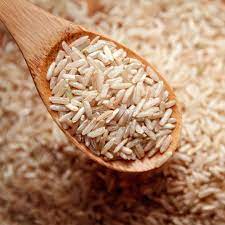Rice is an important strategic crop in the economy of Ghana which is cultivated as both food and cash crop. Rice consumption continues to increase due to population growth, urbanization and change in consumer habits. According to statistics from MoFA, between 2008 and 2020, paddy rice production was in the range of 302,000 MT and 987,000 MT (181,000 to 622,000 MT of milled rice) with large annual fluctuations The total rice consumption in 2020 amounted to about 1,450,000 MT which is equivalent to per capita consumption of about 45.0kg per annum.
Reliant on imports
Ghana depends largely on imported rice to make up for the deficit in domestic rice supply.
According to Agriculture Research for sustainable Development (CIRAD, 2007) Ghana’s rice self-sufficiency ratio declined from 38% in 1999 to 24% in 2006 and increased to about 43% in 2020. Hence the need for food and agriculture sector stakeholders to ensure increased and sustained domestic production of good quality rice for food security, import substitution and savings in foreign exchange.
It is based on this backdrop that more efforts are needed to make the domestic rice value chain competitive that would not only lead to contributing to the growth and structural transformation of the economy but also an important vehicle to mitigate and solve developmental challenges, such as poverty and create more jobs for the youth.
The challenge
According to the Deputy Minister of Agriculture in charge of Crops, Hon. Yaw Frimpong Addo, the country is still having some teething challenges in both the rice seed and grain value chains, especially during the post-harvest stage in maintaining quality standards to make our domestic rice competitive. Some of these challenges include inadequate processing infrastructure and modern milling machines, insufficient silos for storing paddy before milling, inadequate quality standard testing for both seed (paddy) and milled rice etc.
Interventions
In recent years, the Government has made conscious effort to transform the entire agricultural sector into a vibrant and high yielding sector. The rice sector has particularly been given top priority through engagement with International, Regional and National partners to boost domestic rice production. To ensure the sustainability and the comprehensive development of the rice crop, the Ministry of Food and Agriculture has facilitated the revision of the National Rice Development Strategy (NRDS) with a goal to achieve self-sufficiency by 2024. The NRDS will serve as a guide for all projects and interventions in the rice sector in Ghana.
In addressing some of the teething challenges that impede the smooth running of the post-harvest portion of the rice value chain, the Ministry of Food and Agriculture and the United Nations Industrial Development Organization (UNIDO) has joined hands in formulating a project, dubbed “Improving the Technology and Quality Control System for Higher Addition in Post-Harvest Processes of Rice Value Chain”.
IT is hoped that the project will upgrade the quality assurance system along the rice value chain, focusing on the post- harvest processes and crop management and will no doubt contribute to meeting rice self-sufficiency in Ghana in 2024.
Also, the Government of Ghana for the past years have made conscious effort to promote rice production to address food security and poverty reduction through National Policies, Strategies and Initiatives as captured in Food and Agricultural Sector Development Policies I & II (FASDEP I & II), and its current implementation plan.
The Government, through its current flagship programme “Planting for Food and Jobs” (PFJ) Campaign, which takes its roots from “Investing for Food and Jobs”, has rice as one of the focus crops which is being promoted. The overall objective of the “Planting for Food and Jobs” Campaign being implemented by the Ministry of Food and Agriculture, is to provide enough food and employment to the jobless. To ensure that the Campaign succeeds, the programme is anchored on five pillars, an approach that is new, inclusive and holistic.
- the provision of subsidized improved seeds to farmers,
- supply of subsidized fertilizers to farmers,
- provision of dedicated extension services,
- marketing strategy to mop up produce and the infusion of
- electronic platform in undertaking all activities in food and agriculture (e-Agriculture)
To place emphasis on the importance of rice in the National economy, the government also introduced the Special Rice Initiative which sought to bring improved rice seeds to farmers at the district level.
It is worth mentioning that a number of development partners and regional bodies have contributed immensely in growing the Ghanaian rice industry including the Korean and Japanese Governments through technical assistance, projects and programmes to increase domestic production.
In the recent past, most rice projects and programmes implemented in Ghana focussed more on the production end of the value chain at the expense of the post-harvest portion of the chain. This affects the competitiveness in terms of standards, quality and profitability of Ghana rice as opposed to the imported rice.
Thankfully the private sector in recent times have is complementing government efforts by establishing rice mills across the country to improve on quality items of mailing the paddy, however there are mitigating factors
According to a Ghana News Agency (GNA) report, thousands of bags of local rice harvested during the last farming season in the Northern Region have remained in the warehouses and homes as farmers struggle to find buyers. The report added that farmers and major rice off-takers are lamenting over the poor patronage of rice because prices of imported rice had become lower due to the benchmark value discount.
Admittedly, the recent outcry of rice farmers and the Rice Millers Association about the benchmark value policy is legitimate and and the is the need for an immediate action to the benefit of local value chain actors in Ghana.
By: Bagbara Tanko & Urowole Philips
MoFA PR


Leave a comment
Comments (0)
No comments yet. Be the first to comment!